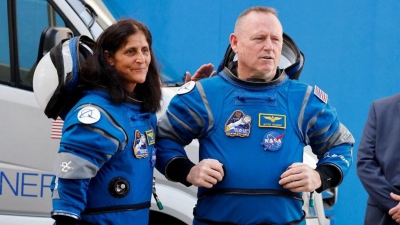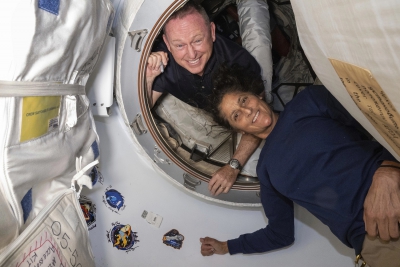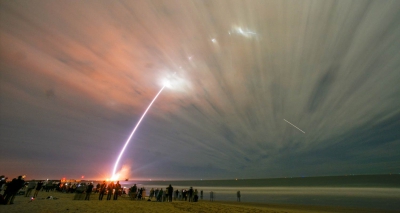On December 19, Eastern Time, the American space habitat technology company Vast announced that the first commercial space station of the world, Haven-1, which the company is building, plans to be launched to low-Earth orbit by SpaceX using a Falcon 9 rocket in 2025. It also ordered two Dragon spacecraft to send commercial astronauts to the Haven-1 space station to support commercial missions.

The space station design uses a single cabin segment and is a compact commercial space habitat solution. It can support four astronauts living and working in orbit for 30 days. The single cabin section has a diameter of 4.4 meters, a length of 10.1 meters, a mass of 14 tons, a power of 13.2 kilowatts, a 1.1-meter diameter dome porthole, equipped with a starlink network, a pressurized space of 80 cubic meters, a living space of 45 cubic meters, and a carrying capacity of 4 people. Orbit: 425 kilometers, equatorial inclination 51.6°, the same as the International Space Station. Prepare to replace the International Space Station in 2030.

It is planned to be launched into low-Earth orbit by the SpaceX Falcon 9 rocket in 2025, and then the Dragon spacecraft will carry commercial astronauts to and from the space station to perform missions.
Main features:
① The first commercial space station of the world: Haven-1 is planned to be launched in 2025. The goal is to become the first commercial space station put into actual use, ahead of other competitors, and fill the market gap after the retirement of the International Space Station in the future.
② Support private astronaut missions: Haven-1 will participate in Private Astronaut Mission (PAM) program of NASA, providing private customers, scientific research institutions, and international space agencies with opportunities to travel to the space station, and further expanding commercial applications in low-Earth orbit.
③Modular design and functional support: As an independent space habitat module, Haven-1 has functions such as life support, scientific experiments, and technology testing. It can be used as a microgravity laboratory to support scientific researchers to carry out scientific experiments in multiple fields, including biomedicine, materials science and technology verification.
④ Equipped with Starlink laser network: Haven-1 is equipped with Starlink laser communication system, which provides high-speed and stable Internet connection, solves the problem of limited space station communication in the past, and supports scientific experiments, real-time data transmission and ground communication.
⑤Available for use by private and international customers: It is planned to open up the right to use the space station through cooperation with international customers (such as sovereign governments, international space agencies), attract global users, and promote the development of the low-Earth orbit economy. The Czech Republic has signed a memorandum of understanding with Vast.
⑥Future expansion potential: Haven-1 is the first step in commercial space station plan of Vast. In the future, it plans to upgrade to the larger Haven-2 space station, and eventually realize a space habitat with artificial gravity to support human beings' long-term living and working in space.

About VAST
Vast was founded in 2021 by Jed McCaleb, a famous American technology entrepreneur and blockchain pioneer, with the aim of developing a new generation of space stations for mankind and pioneering long-term space life. Haven-1, the first commercial space station of the world, is scheduled to be launched in 2025. Vast is also developing Haven-2 as a potential successor to the International Space Station, designed to serve Commercial Low Earth Orbital Destinations (CLD) program of NASA as a space microgravity laboratory. The long-term goal of Vast is to build space habitats with artificial gravity to enable humans to live in space, reaffirming its commitment to the future of space.















